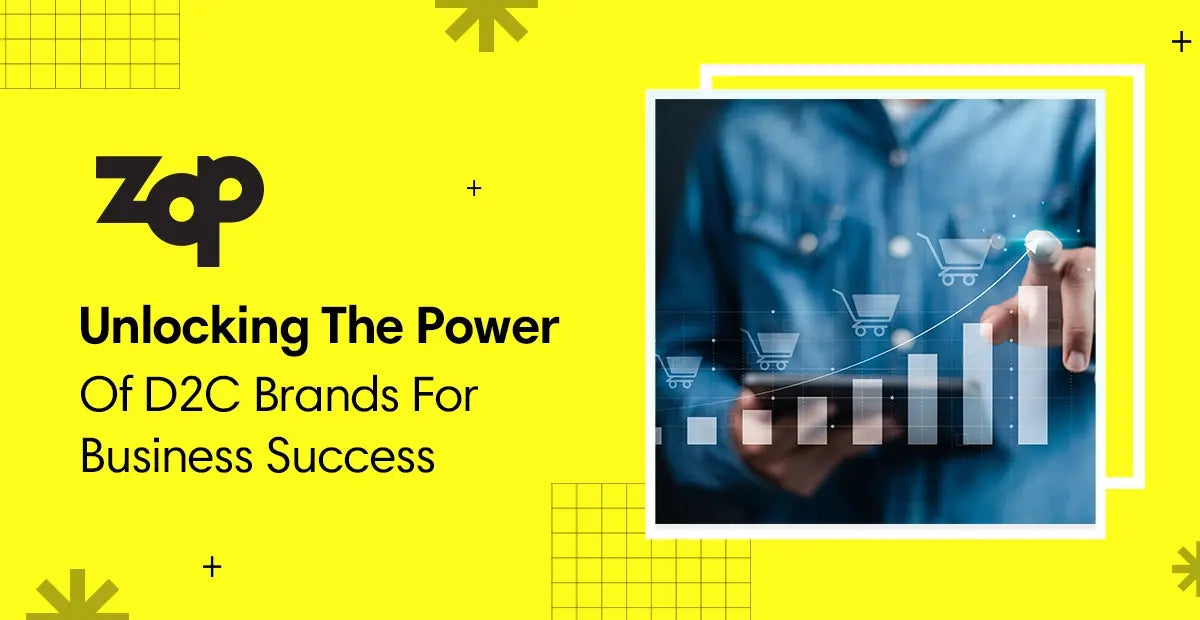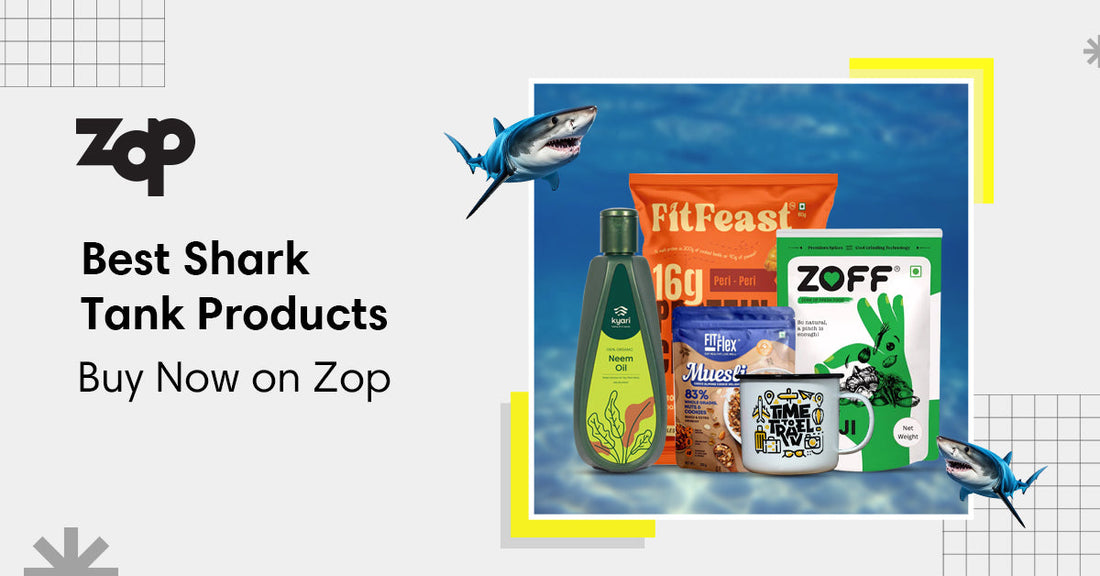D2C (Direct-to-Consumer) brands are transforming the way businesses operate. By selling directly to customers without relying on middlemen, these brands gain more control over pricing, products, and customer interactions. Understanding the D2C model is essential for businesses aiming to stay competitive in a rapidly changing market. With the growing popularity of this approach, it offers a more direct and personalised connection with customers, making it a valuable strategy for expanding reach and improving the overall shopping experience.
Now, look closer at the D2C model and how to launch your D2C brand.
A Closer Look at D2C
Direct-to-consumer (D2C) refers to a business model where brands sell directly to their customers, bypassing traditional retailers and middlemen. In a typical retail setup, products journey through multiple intermediaries before reaching the end consumer. Manufacturers create products and sell them to wholesalers, distributing them to retailers. Finally, customers purchase these products from physical or online stores.
The popularity of D2C sales reflects brands’ desire to forge stronger connections with consumers. This model fosters brand loyalty and allows companies to manage their pricing and marketing strategies more effectively. By embracing the D2C model, brands can enhance the shopping experience, build lasting customer relationships, and streamline operations. This shift empowers consumers to make purchases without relying on intermediaries, creating a more direct and satisfying shopping journey.
Why More Companies Are Embracing the D2C Model?
Here is why companies are transitioning towards the D2C model:
Direct Access to Customers
A significant advantage of the D2C model is direct access to customers. Brands sell through their websites, eliminating wholesalers and retailers. This boosts profit margins and fosters deeper relationships by allowing personalised experiences that resonate with customers.
Building Brand Communities
D2C models create communities of brand advocates. Engaged customers become loyal supporters, sharing positive experiences and driving organic growth. This community also offers valuable feedback for continuous improvement.
Focusing on Lifetime Customer Value
Owning customer relationships helps brands focus on long-term value. Personalised interactions encourage repeat purchases and enhance lifetime customer value. The D2C model ensures a seamless journey from browsing to post-purchase support, increasing satisfaction and loyalty.
Controlling Brand Image
D2C provides better control over brand image. Companies maintain consistent messaging across platforms, strengthening trust and recognition. Direct engagement allows brands to gather insights about marketing strategies and product development.
Data Ownership and Insights
Data ownership is crucial in D2C. Direct interactions yield insights into buying patterns and preferences. Brands can leverage this data to refine marketing efforts, improve offerings, and enhance customer experiences, boosting conversion rates.
Increased Profitability
D2C improves profitability by eliminating intermediaries, allowing brands to retain more revenue. This financial flexibility supports reinvestment into product development and marketing, driving innovation.
Rapid Growth of the D2C Market
The addressable D2C market was estimated to be worth USD 33.1 billion in 2020. It is expected to nearly triple and reach USD 100 billion by 2025, with fashion and accessories as the top emerging D2C categories. This growth reflects strong direct relationships between D2C brands and consumers, leading to increased loyalty. Established brands are expected to dominate D2C revenue.
Consumer Preference for Direct Shopping
Consumers prefer shopping directly from brands, with 53% opting for better pricing and free delivery. Younger consumers, especially millennials and Gen Zs, drive this trend, seeking meaningful shopping experiences and aligning with brands that share their values.
The Hurdles of Direct-to-Consumer Selling
A direct-to-consumer (D2C) model can present several challenges for brands. Understanding these hurdles and their solutions is crucial for successfully navigating the D2C landscape.
Difficulty Acquiring Customers
New brands often rely on retail stores to gain visibility and trust. However, D2C brands lack this advantage, making it harder to establish online credibility. As a result, substantial investments in organic search, social media, and paid advertising are necessary to attract new customers.
Managing Logistics
Logistics is a significant hurdle in the D2C model. Brands must oversee order fulfillment, shipping, returns, and inventory management. Meeting customer demands for fast delivery requires strategic planning and dependable fulfillment partners, such as trusted carriers and warehousing providers.
Scalability Challenges
D2C operations can be costly and complex, often requiring in-house marketing, warehousing, and customer support management. Brands must adapt quickly and efficiently to handle growth. Leveraging technology to automate tasks and streamline operations is essential for scalability.
Damaging Existing Relationships
Adopting a D2C model can raise concerns about disrupting relationships with current partners. Maintaining established partnerships is vital, as building these connections takes time. However, as B2B markets evolve, brands must seek ways to expand their reach without alienating partners. Open communication and collaboration are key to navigating this transition.
Adjusting Marketing Strategies
D2C brands must shift their marketing mindset. Unlike B2B sellers, consumers have different engagement preferences, often relying on social media platforms for product discovery. Brands lacking B2C marketing resources may need to hire experts or collaborate with agencies to develop effective consumer-centric strategies.
Learning to Retail
Selling directly to consumers differs significantly from B2B transactions. Emotional triggers play a significant role in consumer purchases. D2C brands must understand buyers' motivations and tailor their messaging to resonate with consumer preferences, focusing on lifestyle benefits rather than technical specifications.
Facing Greater Competition
The D2C space is highly competitive. Brands must differentiate themselves and capture customer attention amidst numerous alternatives. Listing products on platforms like Amazon can expose brands to new audiences, potentially increasing sales and visibility.
Integrating Multiple Models and Data
Many B2B brands are unprepared for the complexities of D2C selling. Investment in technology and marketing is crucial to managing new channels effectively. Additionally, integrating customer data across the organisation allows brands to enhance their offerings and make data-driven decisions.
Inventory Management Changes
Introducing a D2C channel necessitates changes in inventory management. Brands must carefully assess stock availability across various locations, including distribution centers and online stores. Streamlining inventory management can enhance the customer experience for B2B and D2C transactions.
Order Fulfillment Challenges
Today’s consumers expect fast deliveries, similar to the experiences offered by major retailers. Many manufacturers struggle to manage fulfillment processes effectively. Brands should evaluate options like partnering with third-party logistics (3PL) providers or developing in-house fulfillment networks to meet these demands.
Building Technical Infrastructure
D2C brands require robust eCommerce infrastructure, including a user-friendly website, efficient back-office systems, and reliable analytics. Ensuring the infrastructure can adapt to market changes is vital for long-term success.
Innovative Sustainable Packaging for D2C Companies
As D2C companies increasingly prioritise sustainability, innovative packaging solutions are gaining attention. Here’s an in-depth look at some groundbreaking approaches to reshaping the packaging landscape:
1. Edible Packaging
Edible packaging is an innovative way to reduce waste by allowing consumers to eat the packaging and the product. Examples include:
- Seaweed-Based Films: Flexible films made from seaweed extracts that decompose naturally if not eaten. They minimise waste and offer nutritional benefits.
- Milk Protein Films: Created from casein, these films provide an edible option and extend shelf life by acting as a barrier against oxygen.
- Fruit and Vegetable Peels: Research is underway to use peels from fruits like oranges and bananas for biodegradable films, turning food waste into eco-friendly packaging.
2. Biodegradable and Compostable Materials
Advancements in materials science have led to biodegradable and compostable packaging that reduces the environmental impact of traditional plastics. Key materials include:
- PLA (Polylactic Acid): Made from renewable resources like corn starch, PLA decomposes under industrial composting conditions and can be used for various packaging applications.
- PHA (Polyhydroxyalkanoates): Fully biodegradable materials produced through fermentation, suitable for diverse packaging types.
- Starch-Based Plastics: Combining starch with other biodegradable polymers creates flexible, compostable options, particularly for perishable goods.
3. Reusable and Refillable Packaging
Several D2C brands are embracing reusable and refillable packaging solutions that reduce single-use plastics to support a circular economy. Notable examples include:
- Glass and Metal Containers: Durable and perfect for dairy, beverages, and bulk foods, these materials offer a premium feel and reduce waste.
- Silicone Pouches: They are versatile, reusable, and can accommodate various product shapes, making them a practical choice.
- Returnable Packaging Systems: Consumers can return empty containers for cleaning and refilling, fostering loyalty while promoting sustainability.
4. Mushroom-Based Packaging
Dell is leading the way with mushroom-based packaging from mycelium and agricultural waste. This biodegradable solution provides cushioning while reducing reliance on petroleum-based materials.
5. Starch-Based Packing Peanuts
Starch-based packing peanuts are replacing traditional polystyrene in shipping. These compostable materials dissolve in water and are safe for wildlife, ensuring environmentally friendly packaging.
6. Smart Packaging Technologies
Innovative packaging technologies, such as label QR codes, allow consumers to learn about local recycling programs, encouraging responsible disposal and raising awareness.
7. Plant-Based Inks
Many brands are shifting to plant-based inks for branding and labelling, offering a safer, eco-friendly alternative that aligns with sustainable packaging practices.
Spotlight on Eco-Friendly D2C Brands
Many D2C brands are stepping up to create sustainable products in a world increasingly aware of environmental issues. Here are some notable eco-friendly brands that are leading the charge in India and beyond:
Khadi Natural
Khadi Natural focuses on sustainability through its handcrafted and certified organic offerings. The brand’s range includes various personal and home care products, all emphasising natural ingredients. By prioritising eco-friendly production methods, Khadi Natural appeals to those looking for effective and environmentally safe solutions.
Minimalist
As a D2C brand, Minimalist is committed to delivering high-quality cosmetic products with straightforward, natural ingredients. Their mission is to make sustainable beauty accessible to everyone. Focusing on eco-friendly practices, Minimalist helps users establish a minimalist beauty routine that remains effective and affordable.
Mother Sparsh
Mother Sparsh specialises in organic baby products, including chemical-free baby wipes and diapers. The brand is focused on providing natural, eco-friendly options that ensure the safety and comfort of babies while promoting sustainable living.
Neeman’s
Neeman’s has made a name for itself as the first shoe brand in India to utilise natural, renewable materials such as merino wool. Founded in Hyderabad in 2017, Neeman’s aims to create stylish and comfortable footwear that aligns with eco-conscious values. By incorporating sustainable materials, the brand is redefining comfort in an environmentally friendly way.
St. Botanica
St. Botanica offers a wide array of natural and organic skincare products. Committed to using no harsh chemicals, the brand provides practical solutions that nourish and rejuvenate the skin. As a green brand, St. Botanica focuses on health-conscious offerings that are good for the skin and the planet.
The Sleep Company
The Sleep Company specialises in customisable mattresses, blending quality with affordability. By using eco-friendly materials and advanced ergonomic technology, they aim to enhance the sleep experience for their customers. Their products are cruelty-free, further underscoring their commitment to sustainability.
Aether Beauty
Aether Beauty stands out in the makeup industry, offering a fully sustainable product line. This vegan and cruelty-free brand has introduced the first zero-waste makeup palette, with packaging designed to be completely recyclable. Their commitment to sustainability is evident in every product, which is non-toxic, organic, and fair-trade, ensuring that conscious consumers can feel good about their purchases.
Bite
Bite has revolutionised the toothpaste market with its eco-friendly offerings. They’ve eliminated animal-based ingredients from their formulas and provide 100% plastic-free packaging. Instead of traditional toothpaste tubes, Bite’s products come in infinitely recyclable glass jars. Their simple tablet format makes for an easy transition to a more sustainable oral care routine.
Green Toys
Green Toys takes a unique approach by manufacturing children’s toys from 100% post-consumer recycled plastic. Their commitment to saving materials from landfills results in non-toxic, dishwasher-safe, and eco-friendly toys that delight parents and children. With a mission to create environmentally safe products, Green Toys is a responsible choice for families.
Launching Your D2C Brand: A Step-by-Step Guide
Here’s a step-by-step guide that can help you launch your D2C brand:
Step 1: Find Your Niche and Products
Identify a niche where your products solve specific customer problems. Focus on filling a market gap with in-demand products and minimal competition to help your brand stand out.
Step 2: Conduct Market Research
Conduct thorough market research to understand your target audience, industry trends, and competitors. Gather customer preferences and purchase behaviour insights to guide product development, branding, and marketing strategies.
Step 3: Develop a Solid Business Plan
Create a detailed business plan outlining your brand’s mission, product offerings, and growth strategies. Include a production, distribution, marketing, and financial planning roadmap to guide your brand's direction.
Step 4: Choose a Name and Design a Logo
Create a unique and memorable brand name and logo that reflect your brand identity and values. A strong brand image builds trust and recognition in the market.
Step 5: Source Your Products
Decide how to source or manufacture your products in-house, through partnerships with manufacturers, or via drop shipping. Evaluate suppliers based on quality, cost, and delivery times for reliable order fulfillment.
Step 6: Set Up Your eCommerce Website
Build a user-friendly website on a reliable eCommerce platform. Ensure the design is intuitive, mobile-optimised, and includes detailed product descriptions and high-quality images for a seamless user experience.
Step 7: Optimise Your Website for SEO and UX
Before launching, optimise your website for search engines (SEO) and user experience (UX). Use relevant keywords, create compelling product descriptions, and optimise loading times. Set up secure payment gateways and a straightforward checkout process to improve conversion rates.
Step 8: Plan a Pre-Launch Marketing Strategy
Engage potential customers before launch using email marketing, social media campaigns, and influencer partnerships. Share sneak peeks, product teasers, and exclusive offers to generate excitement.
Step 9: Utilise Trust Badges and Secure Payment Options
Include trust badges, such as SSL certificates or payment security seals, on your website to reassure customers about the safety of their information and boost their confidence in purchasing.
Step 10: Establish Pricing and Shipping Strategies
Set competitive pricing that aligns with your brand’s value. Create a clear shipping strategy with free or express shipping options, and consider a scheduled delivery option for added convenience.
Step 11: Set Clear Launch Goals
Define specific objectives for your launch, such as acquiring a target number of customers or hitting revenue goals. These goals will guide you on your website launch strategy and help measure success.
Step 12: Marketing and Social Media
Maximise visibility through digital marketing channels. Utilise social media, email marketing, and paid ads to engage with customers and drive traffic, encouraging conversions.
Step 13: Gather and Act on Customer Feedback
Once your D2C brand is live, focus on customer feedback. Use reviews and surveys to gather insights and implement changes to enhance offerings, improve service, and strengthen your brand’s reputation.
By following these steps and considering each primary aspect, you’ll be equipped to launch a D2C brand successfully, meet customer expectations, and drive long-term growth.
Kickstart Your D2C Brand With ZOP
Kickstart your D2C brand with ZOP, a platform designed to help emerging D2C brands reach thousands of shoppers across India. Shiprocket ZOP isn’t just a marketplace; it’s a discovery platform where your brand can share its story, philosophy, and unique products directly with customers. By connecting with buyers personally, you can build trust and loyalty while showcasing the passion behind your brand.
ZOP gives your brand the perfect space to grow. With features like one-click checkout, fast express shipping, and seamless post-purchase support powered by Shiprocket, you can provide a reliable and smooth shopping experience. It’s more than just selling; it’s about creating meaningful connections with your customers. With access to 100+ D2C brands and a curated selection of 25,000 designs, Shiprocket ZOP helps your brand stand out and thrive in today’s competitive market.
Conclusion
The rise of D2C brands has opened up new possibilities for businesses by offering a direct and efficient way to reach customers. This model gives companies more control over their operations, from pricing to customer relationships. As the market continues to shift towards personalised and streamlined shopping experiences, adopting a D2C approach can be a powerful strategy for long-term growth. Embracing this method allows businesses to stay competitive, build stronger connections with customers, and adapt to the changing landscape of commerce. The potential for growth and customer engagement through D2C brands is worth considering for any business.












